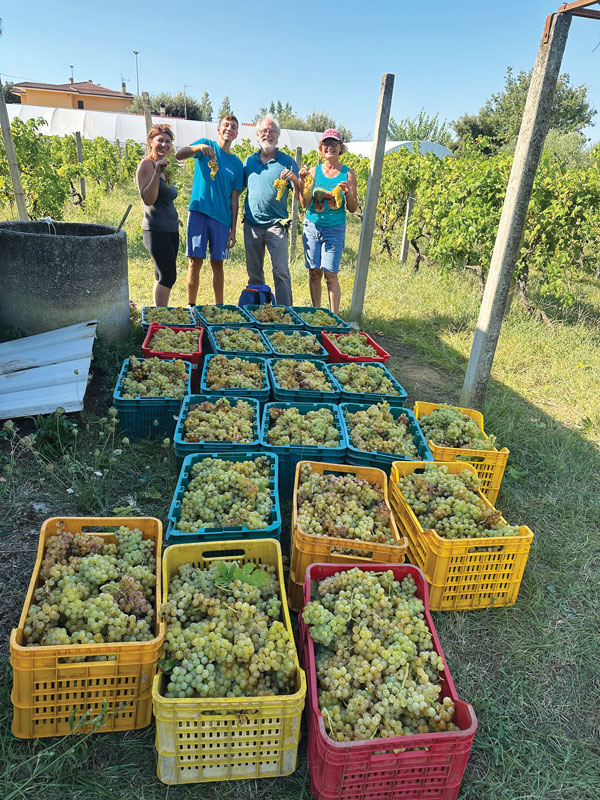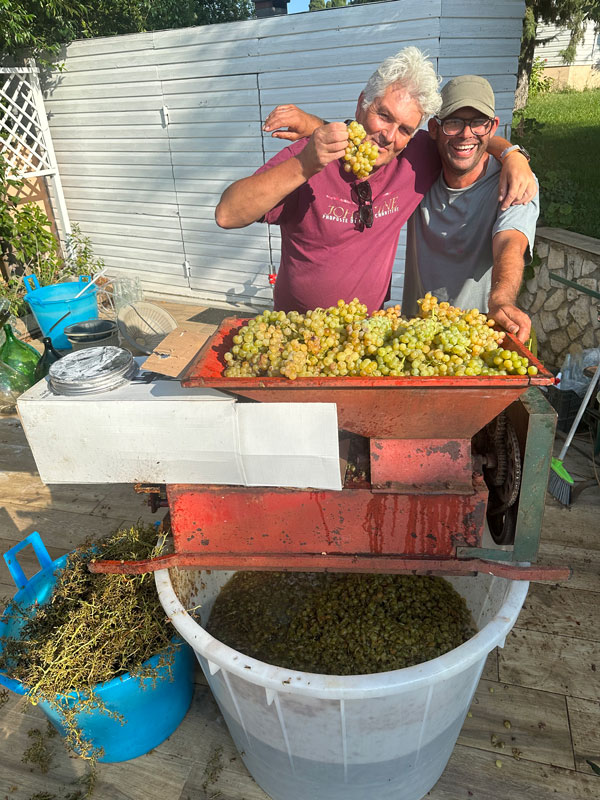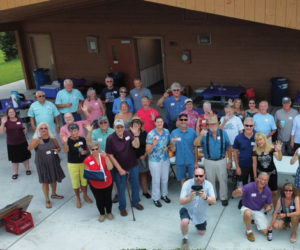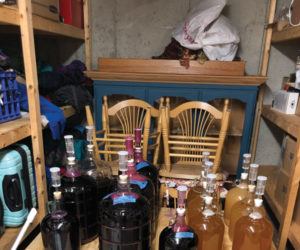Bringing new school to the Old World
In 2017, as I contemplated winding my career down as an architectural conservator, my daughter and my wife took a trip to Italy with the fantasy of looking for a second home there. I got a call saying they had found a place, but there was a piece of land attached and it had an old vineyard. By 2018, site unseen, I found myself the unsuspecting owner of an old farmhouse on approximately 40 acres (16 ha) in a town called Terracina, halfway between Rome and Naples. An abandoned vineyard of perhaps 500–800 vines stood in the middle of the property, now completely overgrown.
I felt an obligation to try to revive the vineyard and to make some Italian wine. Having lived in New York City for the past 45 years, what did I know about growing grapes and making wine?

The author’s bountiful harvest of Moscato di Terracina yields another strong vintage in 2023. Photo courtesy of Jeff Greene
Growing in the terroir of Terracina is a special grape called Moscato di Terracina, which is a very floral and aromatic white grape. It has grown in this region since Roman times. I decided to dive right into my education and began my research by trying as many different wines as I could. I found most of the old vineyards had disappeared, replaced by housing developments or converted to plastic covered greenhouse agricultural farms. The Moscato is now mostly grown in the hills and adjacent areas of Campo Soriano and Valle Marina.
The local tradition of home winemaking had declined and even though most remember making wine in their youth, only older folks still make wine at home, mostly for their own personal consumption. But it often had what I would say is a “barnyard” character.
I was able to make my first batch of Moscato wine with my neighbor Gianluca Zomparelli from grapes we harvested locally in 2020. We picked in September and the grapes were not particularly
good that year. Too hot and dry. I watched how the locals processed their homemade wine and was surprised by the lack of any sanitation or control. I applied a bit more stringent cleaning protocol and pitched a commercial yeast, Lalvin ICV-D47. The results of all our efforts were not very good. Everything still had that “barnyard” funkiness.
The local newspaper did a story on us, which was slightly romantic about how an American was bringing back the old traditional style of Moscato di Terracina.
I began my serious education by subscribing to WineMaker magazine. I took several online workshops with Wes Hagen. I also went on the WineMaker Tuscany, Italy, tour with Publisher Brad Ring in September 2021 and attended the WineMaker Conference in San Luis Obispo, California, in June 2022 . . . and boy did I learn a lot!
In the fall of 2022 I was ready and determined to make a better Moscato! Our harvest that year was from the same vineyard and this time the grapes were better. I utilized yeast nutrients, acid blends, and other tips that I had learned over the past year at the Conference, such as measuring the titratable acidity (TA), recording all the numbers, keeping the fermentation temperature cool, etc. My neighbor, Gianluca, and I made nine different variations, with four different white wine yeasts, two rosés, a Spumante, and two reds.

This past September 2023 we decided to enter our wines in the local amateur Moscato winemaker festival. Lo and behold we won, not only first place, but second as well. The crowd wanted to know where to buy our wine, which everyone swore was just like the traditional wine from their youth. The local newspaper did a story on us, which was slightly romantic about how an American was bringing back the old traditional style of Moscato di Terracina.
Now it seems everyone wants to help with this year’s winemaking. The 2023 grapes were the best ever and my goal is to not leave success up to chance, but to see if we can continue to improve and make consistently great traditional Moscato di Terracina.







